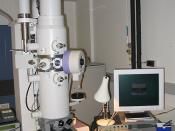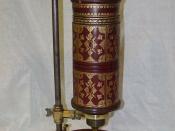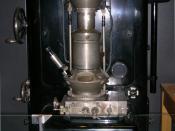The microscope has been one of the greatest inventions in the history of science and has had the most impact on the course of science. Ever since the first microscope was invented in 1590, they have improved our knowledge in basic biology and biomedical research, as well as many other things, all of which are important. The smallest object a human can see with the naked eye is 0.2 mm, for example, algae cells. The light microscope, however, allows us to see things almost 1000 times smaller that what the eye can see, like plant, animal, and bacteria cells, and the electron microscope allows us to see things almost 1,000,000 times smaller, like viruses and proteins.
The Italians paved the road to the invention of the microscope when they discovered how to grind lenses during the 1300's, and as a result, created the first spectacles. The first microscope was developed in 1590 by two Dutch lens grinders and spectacle makers Hans Janssen, father, and Zacharias Janssen, son, when they put two grinded lenses inside a tube.
Later in the 1700's, many discoveries were made to improve the microscope. One was that lenses combining two types of glass could reduce the chromatic effect the previous microscopes had. Then, in 1830, Joseph Jackson Lister came up with another way of improving microscopes. He reduced the problem of spherical aberration by using several weak lenses together at different distances giving good magnification without blurs. All of theses microscopes were light microscopes, however, so they were not powerful enough for the growing demand of magnification. This was soon solved when, in 1903, the ultramicroscope was developed by Richard Zsigmondy which could study objects under the wavelength of light, and in 1938, the electron microscope was developed by Ernst Ruska which greatly improved the...


